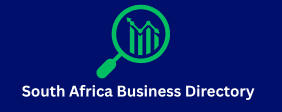3.1 Protecting Freedom of Expression
Independent internet access empowers unbiased speech and civic engagement. UNESCO’s R-O-A-M principles include openness, accessibility, and phone number list human rights in its internet universality framework en.wikipedia.org.
3.2 Preserving Privacy & Security
In an era of mass surveillance and data breaches, tools like Tor, Signal, encryption, and self-hosted solutions put control back in user hands wired.com.
3.3 Promoting Democratic Tech Governance
Decentralized control—whether via open protocols (like RSS or blockchain) or multistakeholder governance (as with ICANN)—helps reduce centralized power over content and domains wired.com.
3.4 Fostering Innovation & Competition
Permissionless innovation, subsidies, and what is website traffic what is google analytics infrastructure peering promote healthy ecosystems—reducing ISP monopolies and encouraging new services brainly.in+10techfreedom.org+10dartpoints.com+10.
3.5 Bridging the Digital Divide
Internet independence isn’t just freedom—it’s access. Policies like Finland’s legal right to broadband and Digital India’s initiatives highlight access as a human right .
4. Pillars of Internet Independence
4.1 Infrastructure Decentralization
-
Local Internet Exchanges (IXs)
Regional IXs, like Bridge IX in South Carolina taiwan lists enable direct data exchange at lower cost and improved latency dartpoints.com+1forbes.com+1. -
Self-hosting services
From Mastodon to Nextcloud, these platforms help users avoid Big Tech monopolies seocoach.net+8wired.com+8dartpoints.com+8. -
Community networks
Grassroots mesh networks in rural areas offer alternatives to ISP roll-out delays .
4.2 Data Control & Private Tools
-
End-to-end encryption (e.g. Signal, PGP) ensures private communication
